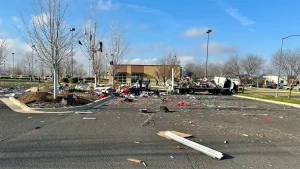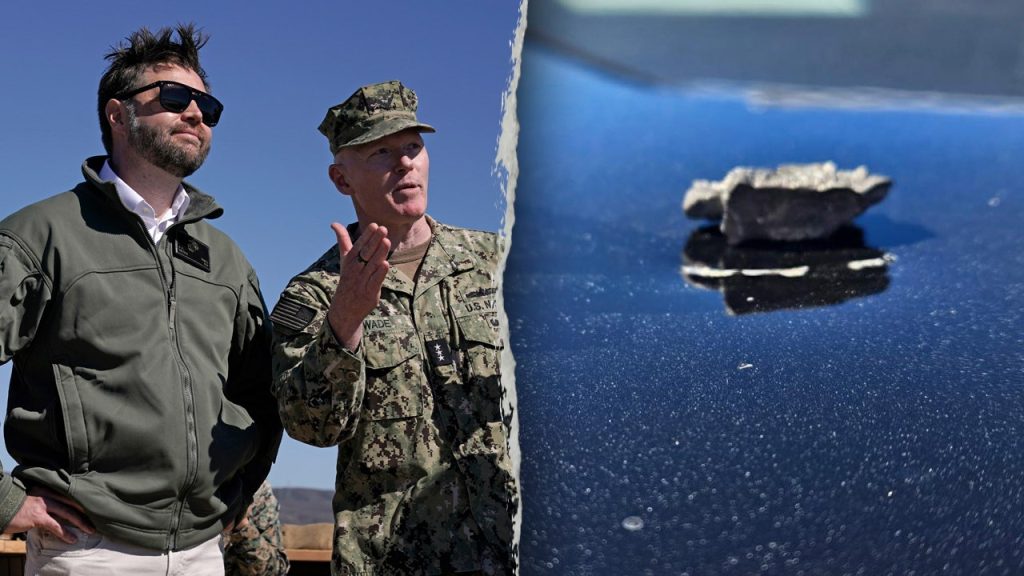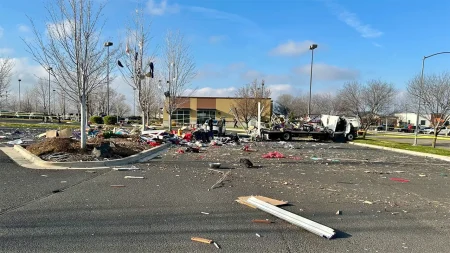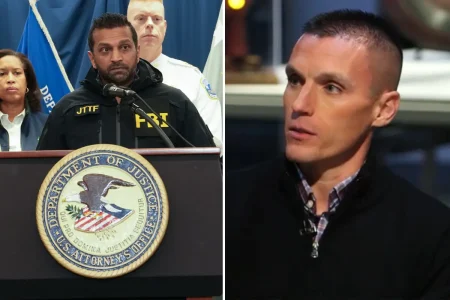New Details Emerge About Artillery Mishap During VP Vance’s Marine Corps Visit
A recent California Highway Patrol (CHP) report has shed light on a concerning incident that occurred during Vice President JD Vance’s attendance at the Marine Corps’ 250th anniversary celebration at Camp Pendleton. The report details how what should have been a controlled live-fire demonstration briefly turned hazardous when artillery debris landed on a closed section of Interstate 5, including a CHP patrol vehicle.
According to the CHP report, the incident occurred at 1:46 p.m. when a 155 mm artillery round fired from White’s Beach “detonated midair” approximately three-quarters of a mile south of Las Pulgas Road. Though the highway had been temporarily closed to accommodate the military demonstration, the premature detonation sent metal fragments raining down on the empty freeway below. CHP Officers Felix and Vizcarra, who were stationed on the closed roadway, described hearing what sounded like “pebbles falling” as the fragments descended around them. One piece of shrapnel struck and dented a CHP patrol vehicle’s hood, though fortunately, no injuries were reported in what could have been a much more serious incident.
The unexpected nature of the detonation prompted immediate safety protocols to be implemented. Within minutes, CHP Sergeants Maxson and Iniguez conducted thorough safety sweeps of both the northbound and southbound lanes of Interstate 5. Their inspection revealed no additional hazards beyond the initially recovered fragments, which measured between one and two inches in length. After determining the area was safe, authorities reopened the freeway to traffic. However, the unusual occurrence has raised significant questions about safety procedures during live-fire demonstrations near public infrastructure, even when those areas are temporarily closed to civilian access.
The CHP Border Division characterized the event as an “unusual and concerning situation” that merits further review. In their assessment, they’ve called for a formal after-action review to strengthen coordination between federal, state, and local agencies during future military demonstrations or training events conducted near public roadways. This recommendation underscores the complexity of managing safety during military exercises that occur in proximity to civilian infrastructure, even when precautionary measures like road closures are implemented. The incident highlights the critical importance of interagency communication and thorough safety planning, especially during high-profile events attended by government officials.
Camp Pendleton officials have announced they will conduct their own investigation into what they termed a “possible airborne detonation of a 155 mm artillery round outside the designated impact area.” This military investigation will likely examine technical aspects of the munition’s performance, firing procedures, and safety protocols that were in place during the demonstration. The Marine Corps, known for its rigorous safety standards during live-fire exercises, will be particularly interested in determining how an artillery round detonated outside its intended impact zone, as such deviations from planned trajectories represent serious safety concerns that must be addressed to prevent future incidents.
The artillery mishap occurred during what was otherwise a celebratory occasion marking 250 years of Marine Corps service to the nation. Vice President JD Vance, himself a Marine veteran, was in attendance to commemorate this significant milestone alongside fellow Marines past and present. Despite the brief safety incident, the celebration continued, highlighting the Corps’ storied history and traditions. Military demonstrations, including live-fire exercises, are common features at such events, designed to showcase military capabilities while honoring the service’s legacy. This particular incident serves as a reminder that even carefully planned military operations carry inherent risks that require vigilant safety measures and thorough interagency coordination to mitigate.










